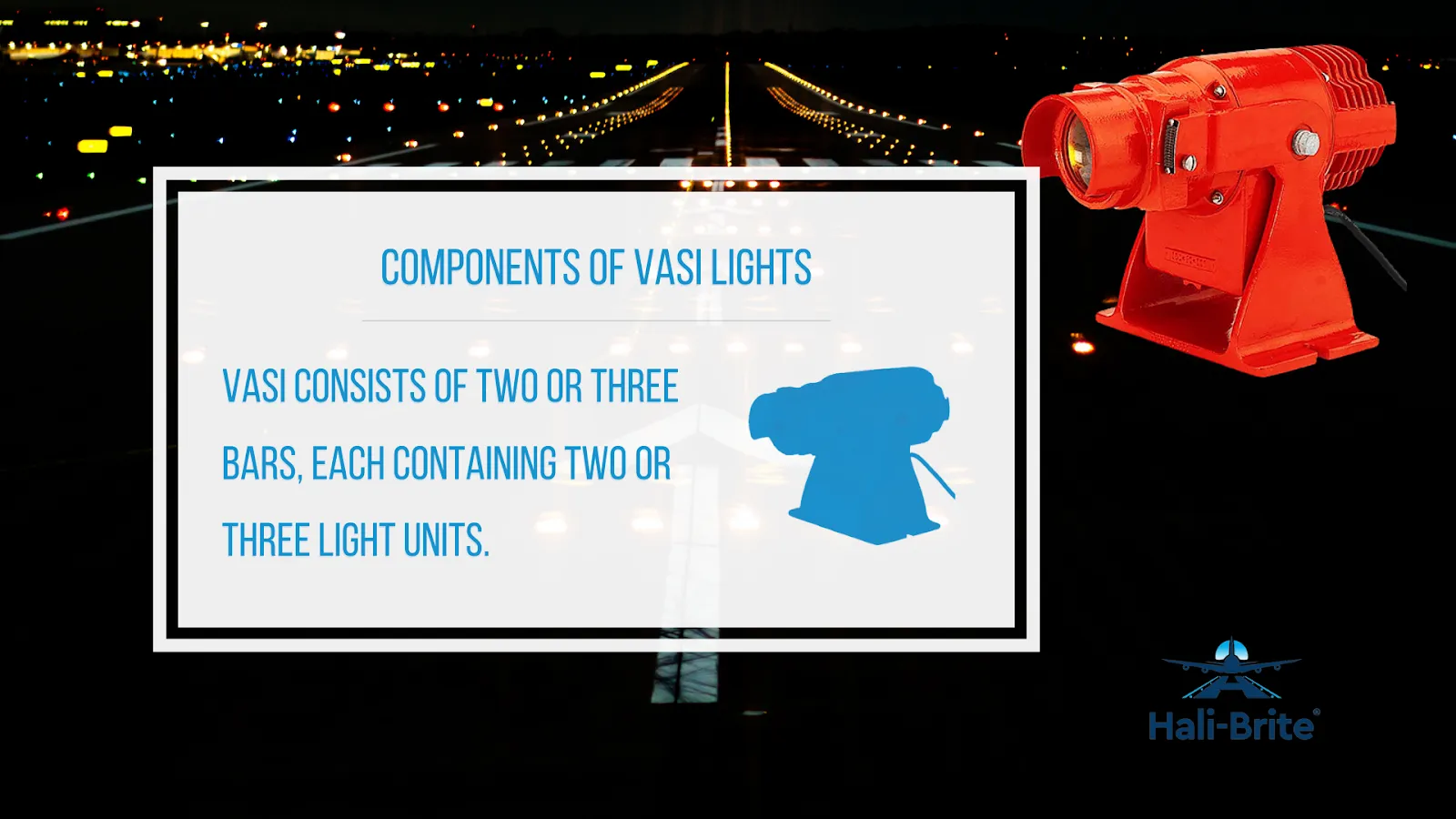Airports rely on navigational aids to maintain safety during aircraft operations. Airport lighting, such as runway lighting systems, provide pilots with visual information to ensure safe and efficient takeoff and landing.
A Visual Approach Slope Indicator (VASI) is a type of runway lighting system used to guide pilots during the approach phase of landing. VASI employs a series of lights arranged in a specific pattern to indicate the pilot’s vertical distance from the runway. This article elaborates on how VASI lights work and why they are essential in airports.
Purpose of VASI Lights
VASI (Visual Approach Slope Indicator) lights are navigational aids installed in airports to guide pilots during the approach and landing phases of flight operations. VASI lights provide visual information on the aircraft’s vertical position above the runway, allowing the pilot to adjust the descent rate and maintain a safe glide path.
VASI lights are typically located on the side of the runway and emit a specific pattern of lights, indicating whether the pilot is too high, too low, or on the correct glide path angle. As the aircraft approaches the runway, pilots can see these lights from 3 to 5 miles away during the daytime and around 20 miles at night.
Components of VASI Lights
VASI consists of light units mounted in bars. The lights are arranged in two or three bars, each containing two or three light units. The colors of the lights are usually white and red, although some airports use different color combinations.
Light Bars
Most VASIs installed in airports have 2, 4, or 12 light units mounted in two bars. These bars are known as near and far bars. However, some VASI configurations have three bars, the near, middle, and far bars, that offer an additional visual glide path to cater to high cockpit aircraft, providing sufficient threshold crossing height. Three-bar VASI consists of either 6 or 16 light units.
Color Patterns
VASI lights utilize color differentiation between red and white lights to indicate the pilot’s altitude relative to the glide path. Each VASI light unit projects a beam of light with a white segment at the top and red at the bottom.
Other variations of VASI display a different kind of color pattern or system. A tricolor VASI, for example, has a single light unit projecting three distinct colors, typically white, green, and red. Some airports also use a pulsating VASI system, which consists of a white and red light that starts to pulsate as the aircraft gets further above or below the glide path.
How VASI Lights Work
VASI lights are used in airports to provide an accurate visual indication of the aircraft’s altitude as it approaches the runway for landing. These lights are positioned at a certain angle, projecting specific color combinations relative to the glide path.
Visual Indications
Two-bar VASI. When an aircraft is on the glide path, pilots will see red lights in the far bar over white lights in the near bar, indicating the optimal altitude for aircraft landing. Pilots navigating above the glide path will see only white lights in both near and far bars, while only red lights are visible to those flying below the glide path.
Two-bar VASI (image source: faa.gov)
Three-bar VASI. Three-bar VASI. Three-bar VASI has two glide paths. The upper glide path, intended for larger aircraft, is indicated by a red light in the far bar and white in the near and middle bars. A white light in the near bar and red in the far and middle bars imply that the aircraft is in the lower glide path. A VASI showing only red lights means the airplane is below both glide paths. Pilots above the two visual glide paths can see only white light projections.
Three-bar VASI (image source: faa.gov)
Glidepath Angle
The visual glide path of a two-bar VASI is set at 3 degrees. Three-bar VASIs, on the other hand, have lower and upper glide paths. The lower glide path provided by the near and middle bars is set at 3 degrees, while the upper glide path indicated by the middle and far bars is 0.25 degrees higher.
In some locations, the glide path angle can be as high as 4.5 degrees to provide enough clearance for obstacles. However, VASI glide path angles that exceed 3.5 degrees may increase the necessary runway length required to land and rollout, especially for high-performance aircraft.
PAPI vs. VASI Lights
VASI and PAPI (Precision Approach Path Indicator) lights are both airport visual aids used to assist pilots in maintaining the correct approach path during landing. Similar to VASI, PAPI uses light units of red and white colors to indicate glide paths. Unlike the VASI system, though, PAPIs have four light units arranged in a single row. PAPI visual indications are shown in the image below.
PAPI (image source: faa.gov)
Get Your Airport Lighting Needs at Hali-Brite to Supplement Your VASI Lights
While VASIs provide vertical guidance to pilots, other airport lighting systems, such as runway edge, threshold, and centerline lights, are also essential to guide them during lateral navigation. We at Hali-Brite can provide your airport lighting needs to supplement your VASI lights. If you need assistance, don’t hesitate to call us at (218) 454-0956 or contact us here.





